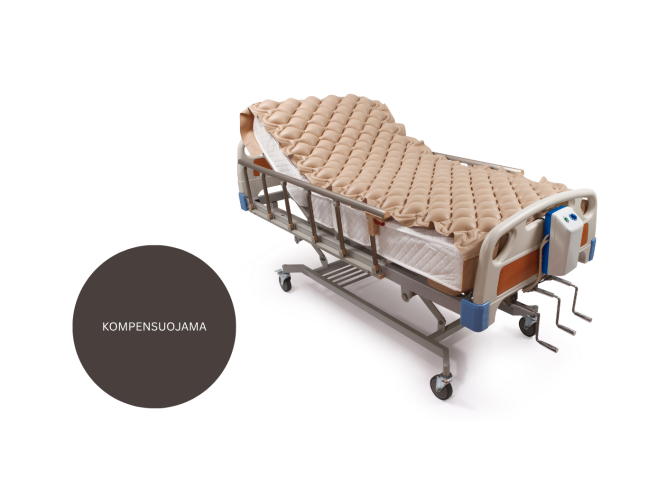Water irrigators are an oral care device that directs a stream of water between the teeth and gums, removing food debris, plaque and bacteria. Along with daily flossing, the water irrigator enhances your daily oral care routine. Oral irrigators have been scientifically proven to reduce several clinical parameters including biofilm, dental plaque, calculus, bleeding, gingivitis, periodontal pathogens, probing depth and inflammation. Mechanical biofilm removal is one of the most effective oral care control methods.
There are many types of oral irrigators, which consist of: a tank to store water, an electric motor to power the pump and a special nozzle. The motor and pump cause pressurized water to flow from the reservoir, through the nozzle the water passes directly between the teeth to remove food particles and bacteria.

There are usually several different types of oral irrigators: desktop or cordless:
Desktop - the heaviest and largest of the four types. It usually sits on your desk and plugs into a nearby electrical outlet. They also come with a watering can that you have to refill as soon as the water runs out. Their current is powerful and effectively cleans food particles and bacteria.
Cordless or battery operated – usually thin, small and portable. This type offers the most flexibility and is ideal for travelers. However, they may not be as powerful as desktop irrigators. They are compact and the wireless design allows for greater maneuverability.
Using the irrigator you:
• You will reduce the overall amount of bacteria that increases the risk of gum disease.
• Removes 99% more plaque than brushing alone, especially when combined with brushing and flossing.
• You will help control gingivitis (inflammation of the gums), especially for those who do not floss regularly.
• You will reduce the frequency of bleeding gums.
• You will improve bad breath.
Water irrigators are an effective tool when:
You have bleeding gums – There are several common reasons why your gums may bleed. The first is gum disease. Gum disease, or periodontitis, is a bacterial infection of your gums. Left untreated, it can lead to tooth loss. Flossing too hard can also cause your gums to bleed. An oral irrigator can be a great way to clean problem areas without the pain of regular flossing.
You have braces – food tends to get stuck behind braces. Water irrigators are great for reaching those hard places where food particles are hiding. Plaque around brackets can cause a number of dental problems, including gum disease, if left untreated.
Your dry mouth – Saliva naturally cleans your mouth and prevents sticky plaque from building up. However, certain medications and genetics can prevent some people from producing enough saliva. This can lead to gum disease and cavities. The oral irrigator easily moisturizes a dry mouth and removes sticky plaque.
Food always gets stuck in teeth - Some people get food stuck in their teeth more than others. This could be due to the shape of your teeth or because they are not perfectly aligned. Food can also get stuck around or between teeth, such as bridges and dental implants. It is an excellent tool for cleaning problem areas.

Most irrigators have an adjustable pressure feature, which is great for those with sensitive gums, implants or braces. The pulsating water setting is particularly effective at removing hard-to-reach food particles.
How to use water irrigators?
The use of water irrigators can remove food residues in hard-to-reach places. It is very easy to use. Just follow these simple steps:
1. Fill the water tank with warm/tepid water.
2. Put the nozzle in the mouth and start with the molars. Keep the irrigator away from teeth and gums. You may want to lean over the sink to avoid splashing water on the countertop when you turn on the sprinkler.
3. Select a pressure setting and turn it on - there will be an on button or dial to adjust the water pressure. Start with the lowest pressure setting and work your way up. Make sure the pressure is high and comfortable. You can close your lips to avoid splashing water, but be sure to let the water drain into the sink.
4. Go along the gum line - go tooth by tooth, directing the water to the gum line and the areas between the teeth. Aim for the top of the tooth, the base of the gum line and the space between each tooth. Hold the stream of water on each tooth for about two seconds, once repeat the process inside and outside the teeth until the entire mouth is cleaned. This should take about two minutes.
5. Empty the tank - when finished, turn off the device, remove the nozzle and drain the remaining water. If you leave stale water in the tank, bacteria can develop.
6. Clean the device - remember to rinse the water tank after each session to keep it clean and hygienic.
Should we use the irrigator every day?
An irrigator should never be used as a substitute for regular brushing and flossing, but it is a great addition to your daily routine. Therefore, it is recommended to use it daily as an additional teeth cleaning tool to preserve healthy and beautiful teeth until a deep and healthy old age.
Do you have any questions?
If you have any questions, please contact e-mail Rehastar.com store staff by phone on weekdays 08:00 - 17:00 or by e-mail Email us anytime and we will try to get back to you as soon as possible.
email by mail: info@rehastar.com
By phone: +370 626 11553






